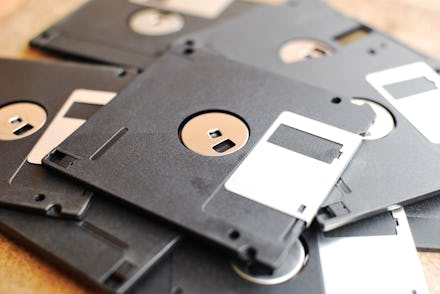The U.S. military has finally stopped using floppy disks for nuclear weapons systems

Each year, the United States spends more on its military than the next 10 nations do on defense spending combined. With such a massive investment, one would imagine that U.S. technology is the latest and greatest, but that certainly isn't always the case. According to a report from C4ISR, the military has just recently discontinued the use of floppy disks that are used to initiate the launch of nuclear weapons. The outdated system was finally replaced by a solid state digital storage solution in June.
You might remember the surprising revelation that the U.S. Air Force still relied upon a floppy disk system when it was shown in action during a 2014 episode of 60 Minutes. The oversized, 8-inch data storage disks were a part of a communications network called Strategic Automated Command and Control System (SACCS), which allowed the Pentagon to issue launch orders. In order to actually use the floppy disks, the military maintained a number of IBM Series/1 computers that were capable of reading the disks and sending and receiving the necessary data.
The Government Accountability Office has highlighted the ongoing reliance on the outdated technology for years, noting that one of the United States military's most deadly weapons is reliant on a computer system that would be outperformed hundreds of times over by a smartphone. Still, the Pentagon pushed back on actually replacing the floppy disk based storage system, reasoning that the older, low-tech machines were actually safer. The system, old and inconvenient as it might be, wasn't reliant on the traditional internet to transmit vital information and was so outdated that hackers would have little motivation to try to create and distribute an exploit designed for the out of date machines.
Despite the extended hold out, the Pentagon finally did get around to replacing those systems in favor of something more modern. While the details on the new system are sparse, a 2016 Government Accountability Office report indicated that the Defense Department intended to update SACCS with "data storage solutions, port expansion processors, portable terminals and desktop terminals." The move falls in line with other modernization projects that the military has initiated in recent years, including an ongoing project to create a unified cloud system that can be used by personnel across all levels of the military. That project, the so-called Joint Enterprise Defense Infrastructure or JEDI, is still early in its development phase but presents one of the biggest potential overhauls to military operations in quite some time. With changes like that on the way, it made less and less sense for the military to continue to rely on computers and floppy disks from the 1970s — even if those devices have thus far proved to be basically hacker proof. Fingers crossed that the new systems prove to be just as secure.